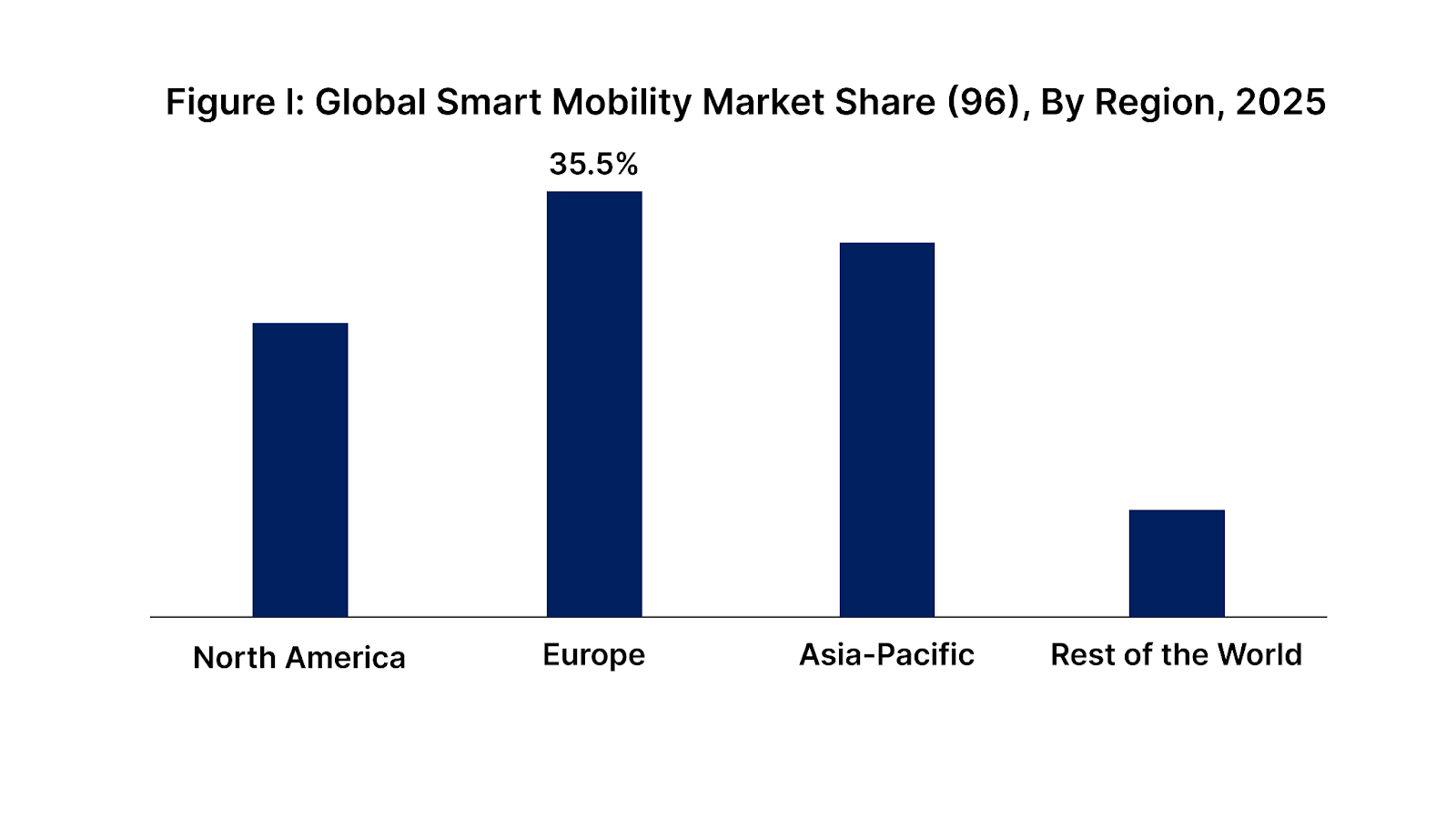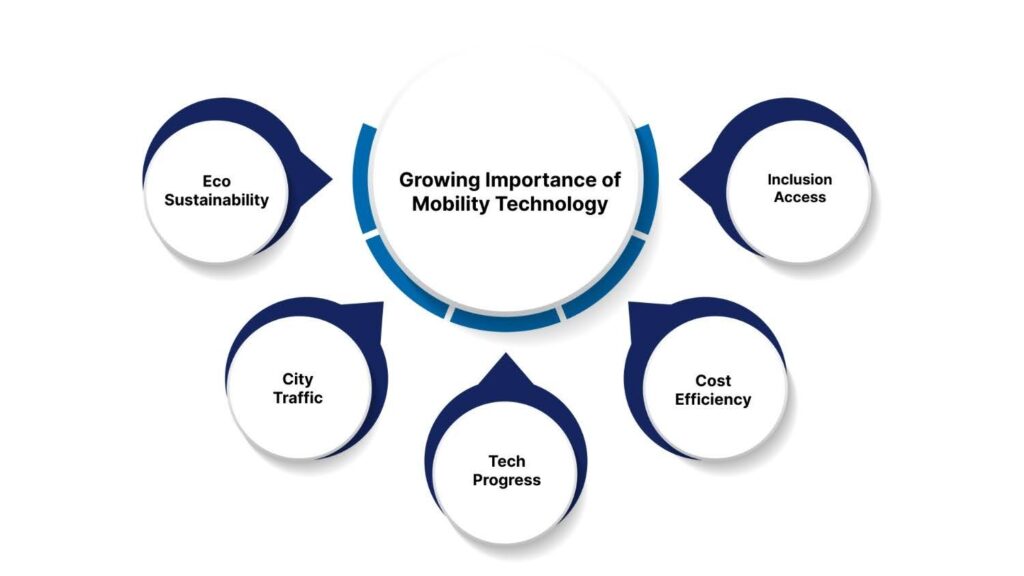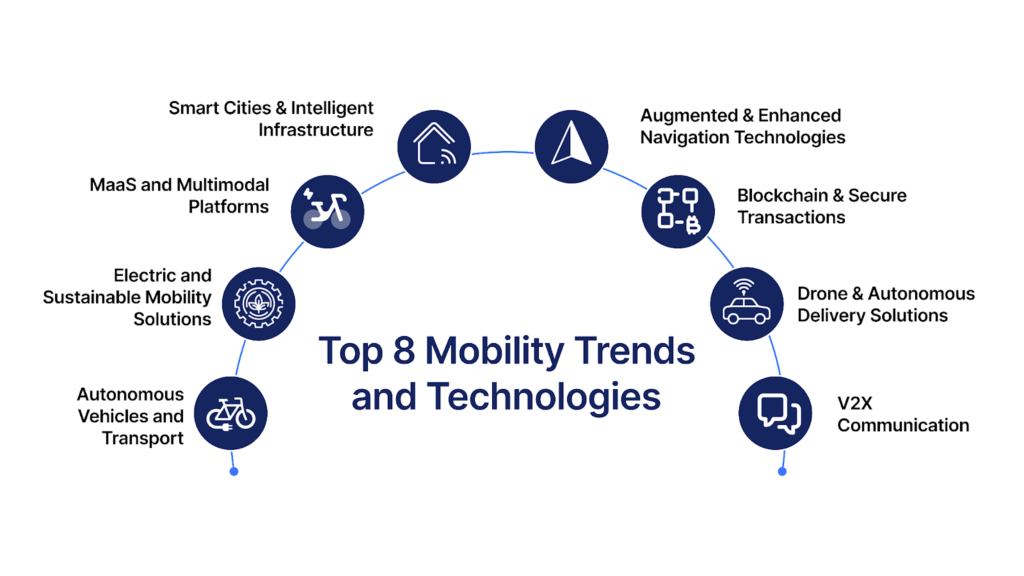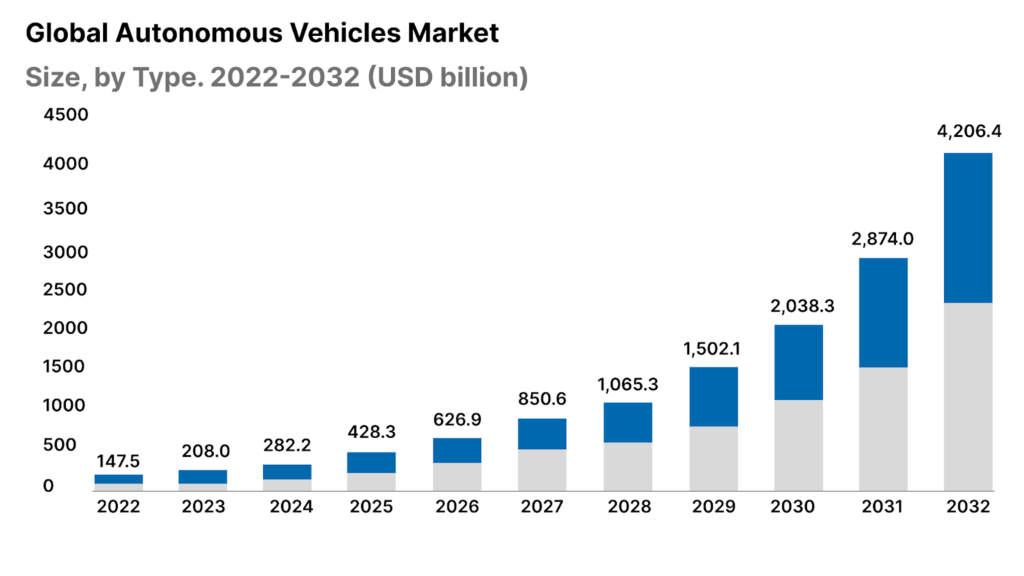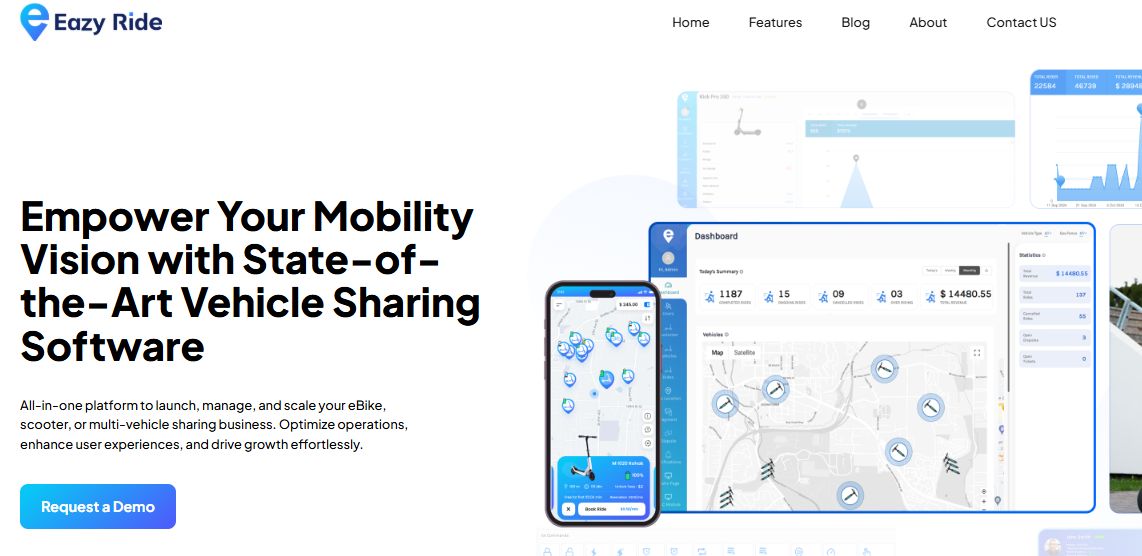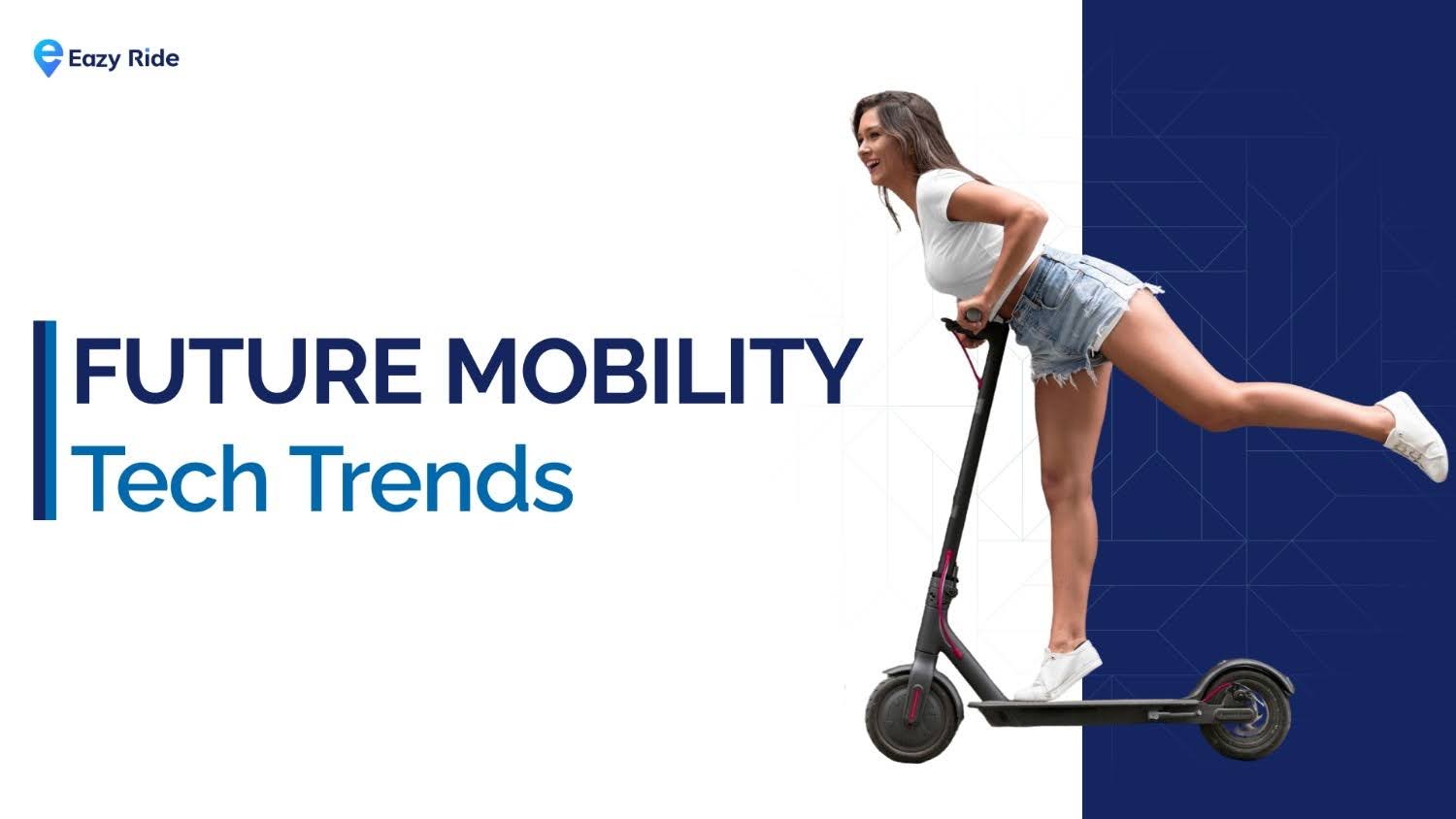 AllMicro Mobility Model
AllMicro Mobility Model
Top Mobility Technology Trends Shaping the Future in 2025
In 2025, mobility has experienced a profound transformation; it’s no longer just about reaching a destination, but about smarter, greener, and more interconnected journeys. Advancements in transportation are reshaping how we move, making travel more efficient and sustainable. Whether it’s the movement of people, goods, or data, the future of mobility promises seamless, eco-friendly experiences that will revolutionize our cities and global connectivity.
The US smart mobility sector, which includes EVs, autonomous vehicles, and connected mobility solutions, is experiencing robust growth. The global smart mobility market is expected to expand from $47.27 billion in 2025 to $178.47 billion by 2032, registering a CAGR of 20.9%.
In this blog, we will explore the top mobility technology trends expected to shape the future of transportation.
What is Mobility Technology?
Mobility technology refers to the set of tools, devices, applications, and systems that enable people and goods to move efficiently, safely, and sustainably across physical and digital environments. This includes everything from electric vehicles (EVs), autonomous driving, ride-sharing platforms, and drones to mobile apps that support travel planning, logistics, and real-time navigation.
Growing Importance of Mobility Technology
Mobility technology is transforming how we travel and transport goods, making movement more efficient, sustainable, and connected. Below are a few key reasons highlighting its growing importance:
- Environmental Sustainability: The rise of EVs and green transport options is helping reduce carbon emissions and dependence on fossil fuels.
- Urbanization & Traffic Management: With increasing urban populations, mobility solutions like smart traffic systems and ride-sharing reduce congestion and improve commute times.
- Technological Advancements: AI, IoT, and 5G are transforming how vehicles operate, communicate, and respond to real-time conditions, making mobility safer and more efficient.
- Economic Efficiency: Mobility tech is reducing operational costs in transportation and logistics, while also creating new job opportunities in tech and services.
- Accessibility & Inclusion: These innovations offer better transportation access for people with disabilities, the elderly, and those in underserved areas.
As mobility technology gains momentum in significance and adoption, it is creating new opportunities for technological breakthroughs. Now, let’s take a closer look at these trends and innovations that are revolutionizing the transportation industry.
Top 8 Mobility Trends and Technologies
The mobility industry is evolving rapidly with technological advancements that promise to redefine transportation systems across the globe. These trends focus on improving safety, efficiency, sustainability, and user experience while building new business opportunities.
1. Autonomous Vehicles and Transport
The development and adoption of autonomous vehicles (AVs) are among the most disruptive trends in the mobility sector. AVs are increasingly being integrated into transportation ecosystems, spanning personal cars, trucks, and even public transportation systems. These self-driving technologies aim to reduce human error, enhance road safety, and optimize traffic flow, making transportation systems smarter and more efficient.
AV sales are projected to reach 10.67 million units globally in 2025, increasing from 5.42 million in 2023 and 7.61 million in 2024. This growing adoption highlights the accelerating shift towards smarter, safer mobility. By 2030, this number is expected to surge to 58 million units, signaling the massive scale at which autonomous technology will reshape the transportation industry.
Key Benefits of Autonomous Vehicles
- Safety: AVs use advanced AI and machine learning algorithms to assess road conditions and make real-time decisions, which drastically reduces the risk of human error and accidents.
- Efficiency: AI-driven systems are designed to reduce congestion by adjusting routes and speeds, leading to smoother traffic patterns and fewer delays.
- Cost Savings: Autonomous delivery services, for instance, can eliminate the need for human drivers, reducing operational costs and improving service efficiency.
For fleet operators and micro-mobility ventures, incorporating autonomous vehicles offers an opportunity to tap into new revenue streams while also improving service delivery. This technology allows for more personalized and seamless ride experiences, particularly in ride-sharing or delivery sectors.
2. Electric and Sustainable Mobility Solutions
As sustainability takes center stage, electric vehicles (EVs) are set to redefine the future of transportation in 2025. Beyond just environmental benefits, advancements in battery technologies will make EVs increasingly affordable, efficient, and practical for both businesses and consumers.
The Growth of Electric Mobility
- Longer Battery Life: Continued development of battery technology will provide longer driving ranges and faster charging times, addressing two of the most significant barriers to widespread EV adoption.
- Cost-Effectiveness: As battery production becomes more efficient, the costs associated with EVs are expected to decrease, making them an attractive option for businesses looking to upgrade their fleets.
- Sustainability: EVs produce significantly fewer carbon emissions compared to traditional vehicles, helping businesses contribute to a more sustainable future while reducing their environmental footprint.
Incorporating electric micro-mobility solutions like e-scooters, e-bikes, and electric car-sharing options into your business model can offer cost-effective, eco-friendly alternatives to traditional vehicles, making them ideal for businesses, cities, and resorts. This technology also aligns with global initiatives, where governments offer tax credits, incentives, and infrastructure development to accelerate EV adoption.
3. Mobility-as-a-Service (MaaS) and Multimodal Platforms
Mobility-as-a-Service (MaaS) is revolutionizing transportation by integrating various modes such as ride-sharing, bike-sharing, public transit, and electric vehicles into a single, user-friendly digital platform. This shift toward multimodal transport is transforming urban mobility, making it more accessible, convenient, and efficient.
Key Features of MaaS
- Seamless Integration: MaaS platforms combine diverse transport modes into a unified service, allowing users to plan, book, and pay for trips with a single app, eliminating the hassle of juggling multiple transport services.
- Cost Efficiency: MaaS will empower users to choose the most time-efficient and cost-effective options based on their specific needs, making urban mobility more accessible.
- Increased Accessibility: MaaS platforms can also cater to underserved communities, providing affordable transportation options to people in rural or low-income areas.
For businesses and entrepreneurs looking to offer comprehensive mobility solutions, implementing MaaS platforms will allow you to provide a broader range of transportation options to your customers. MaaS will help optimize resource usage and ensure a smoother urban mobility experience.
4. Smart Cities and Intelligent Infrastructure
The rise of smart cities is reshaping urban mobility. These cities use data, AI, and the Internet of Things (IoT) technologies to create more efficient, safer, and environmentally friendly urban living environments. The implementation of intelligent traffic management systems optimizes traffic flow, alleviates congestion, and supports the seamless integration of autonomous and electric vehicles.
Smart City Features
- Real-Time Data Integration: Sensors, cameras, and GPS systems collect data to monitor traffic conditions, enabling cities to make dynamic adjustments in real-time and reduce congestion.
- 5G Connectivity: The implementation of 5G networks will enable faster and more reliable communication between vehicles, infrastructure, and users, enhancing the overall safety and coordination of mobility services.
- Sustainability and Efficiency: Smart cities build a sustainable environment by promoting electric vehicles, shared mobility, and intelligent infrastructure, ensuring that urban transportation systems are eco-friendly and optimized.
5. Augmented and Enhanced Navigation Technologies
Augmented reality (AR) and advanced mapping systems are becoming standard in vehicles, transforming the navigation experience for both drivers and passengers. These technologies overlay real-time data such as traffic conditions, hazards, and route information onto the user’s surroundings, making navigation more intuitive and easier to understand.
How AR Navigation Will Change Mobility
- Enhanced User Experience: AR systems will provide drivers with real-time visual cues, making it easier to maneuver through challenging cityscapes and avoid accidents.
- Improved Accessibility: Advanced mapping systems and AR features will cater to people with disabilities, ensuring that transportation is accessible to everyone.
- Efficient Traffic Navigation: AR-based navigation systems will help drivers avoid traffic congestion and roadblocks by providing real-time information on traffic patterns.
For businesses in the tourism or hospitality industries, integrating AR navigation into your fleet can improve customer satisfaction by providing them with an enhanced, more intuitive journey experience.
6. Blockchain and Secure Transactions
Blockchain technology is transforming the mobility sector, particularly in transaction security. It plays a crucial role in ensuring secure, transparent, and tamper-proof payments across a range of transportation services, including ride-sharing, vehicle rentals, and micro-mobility.
Benefits of Blockchain in Mobility
- Secure Payments: Blockchain provides a decentralized ledger system that guarantees transparent and secure financial transactions, ensuring both businesses and customers are protected.
- Reduced Fraud: By utilizing blockchain, businesses can reduce fraud in payment processing, providing customers with peace of mind when booking services.
- Enhanced Trust: The immutability of blockchain ensures that all transactions are recorded transparently, increasing trust between consumers and businesses.
7. Drone and Autonomous Delivery Solutions
Autonomous drones are becoming integral to delivery networks across industries, from e-commerce to healthcare. These drones reduce delivery times, optimize routes, and lower operational costs, making them ideal for areas with limited access to traditional infrastructure.
Drone Delivery Benefits
- Speed: Drones can significantly reduce delivery times by flying directly to destinations, bypassing road traffic.
- Cost Efficiency: Autonomous drones lower operational costs by reducing the need for human delivery drivers.
- Accessibility: Drones can reach areas that are difficult or expensive to serve using traditional delivery methods.
8. Vehicle-to-Everything (V2X) Communication
V2X communication enables vehicles to communicate with other vehicles, pedestrians, cyclists, and infrastructure like traffic signals. This connectivity improves safety, optimizes traffic flow, and helps prevent accidents.
Key Features of V2X
- Improved Safety: V2X communication allows vehicles to anticipate and react to potential hazards more effectively, reducing the risk of accidents.
- Optimized Traffic Flow: Through real-time communication between vehicles and traffic signals, V2X helps to optimize traffic flow and reduce congestion.
- Environmental Benefits: With better traffic management, vehicles can travel more efficiently, reducing fuel consumption and emissions..
As the mobility industry evolves, platforms like Eazyride are leading the charge by integrating innovative solutions into urban transportation. With a focus on sustainability and efficiency, helping businesses and cities adopt smarter, more connected systems. Let’s dive into how they’re shaping the future of urban mobility.
Eazyride: Revolutionizing Urban Micro-Mobility
Eazyride is an innovative white-label micro-mobility platform that equips entrepreneurs and businesses with the tools to build and manage scalable, shared mobility solutions. It supports a range of vehicles including bikes, e-bikes, and scooters, making it ideal for urban mobility, campus transport, and tourism services. Here are some of the key features that make the Eazyride platform stand out:
- Admin Dashboard: A central command center to manage operations, monitor analytics, set pricing rules, create geo-boundaries, and run promotional campaigns, all in one place.
- Analytics & Heatmaps: AI-powered tools deliver insights on trip trends, peak usage zones, idle vehicles, and revenue performance, enabling data-backed business decisions.
- Geofencing & Zonal Control: Utilize geofencing to configure service zones, no-go areas, parking spots, and speed restrictions, ensuring compliance with local regulations while enhancing operational safety and efficiency.
- Multiple Business Models: Supports docked, dockless, and hybrid mobility setups, ideal for citywide transport, university campuses, resorts, or residential communities.
Empower your fleet with AI-driven insights, customizable apps, and real-time management tools for smarter, safer, and more efficient rides.
Conclusion
The future of transportation is being shaped by transformative trends, including the rise of EVs, autonomous driving systems, and expanded shared mobility services. These innovations focus on reducing carbon footprints, enhancing safety, and improving accessibility in urban environments, driven by the growing demand for efficient, sustainable, and user-friendly solutions.
Amidst this transformation, Eazyride, and scale your eBike, e-scooter, or multi-vehicle sharing business.
If you’re looking to launch or enhance your shared mobility service, consider exploring how Eazyride can support your goals. Contact us to learn more about its features and capabilities.


